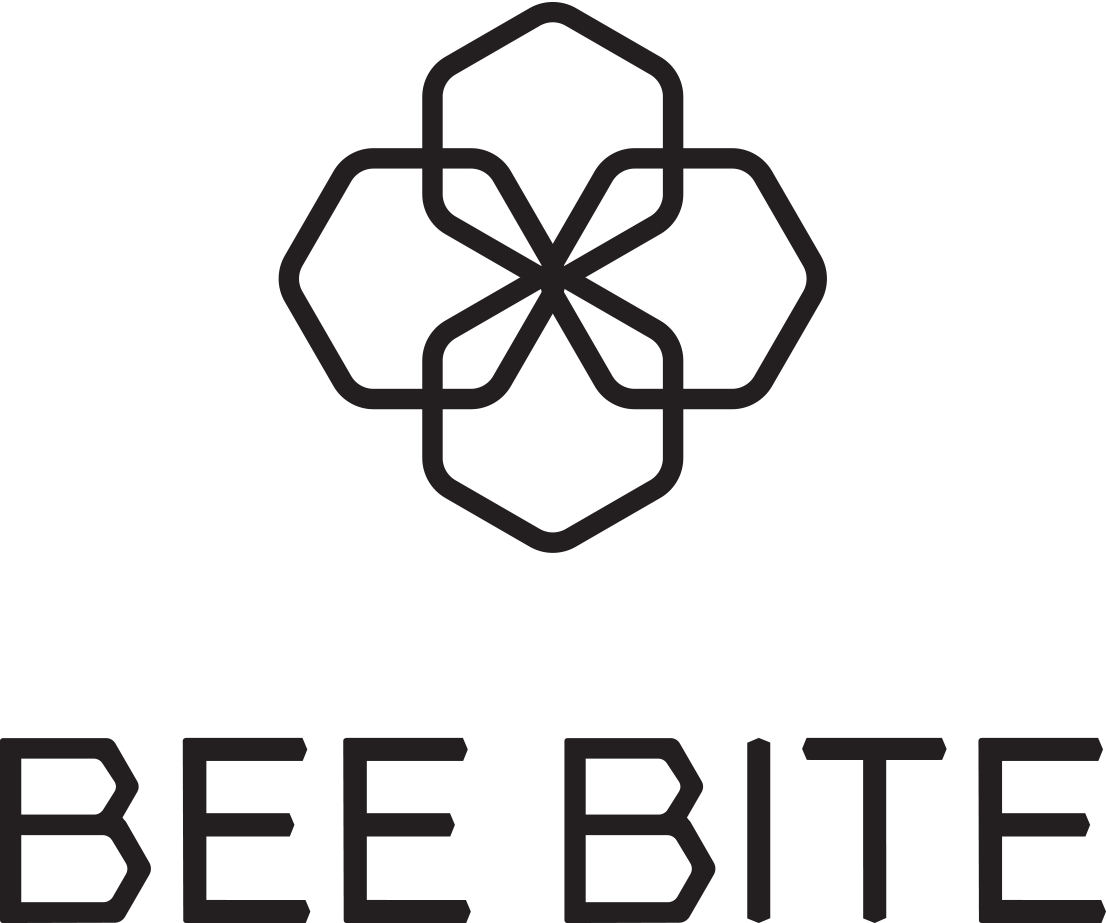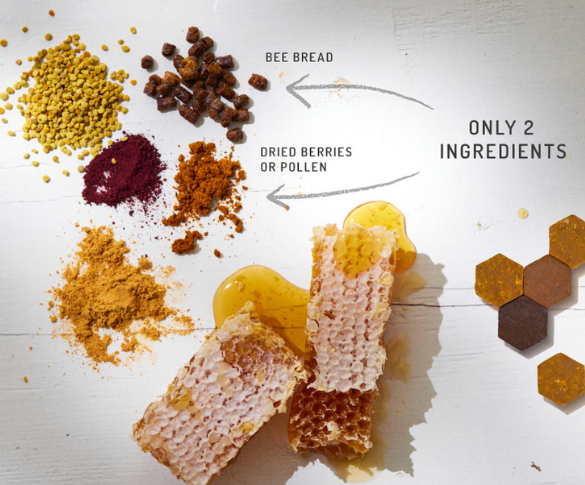SIMILARITIES AND DIFFERENCES BETWEEN HONEY, POLLEN AND BEE BREAD
Bee products have been around for millennia, and the ancient Greeks regarded them as the food of kings. Nowadays, bee products are turning into an interesting alternative to artificial sweeteners and other products. Diversification in our global market has made new bee products available, but the majority of us might feel a bit confused about the difference between one another. We traditionally know about bee honey and what it is, but have you heard about bee pollen and bee bread?
In this article, we are going to discuss the similarities and differences of different bee products that you might have heard of. Moreover, it will be the perfect opportunity to meet the modern trend of bee pollen and bee bread and the biological properties and health benefits they have for you.
Honey, much more than a sweetener
We all know bee honey, but a quick review will be useful to set apart terms and health properties. Bees produce honey by collecting nectar (not pollen) from flowers and plants. Nectar is a sweet substance, and honey is supersaturated in sugar, but with a very high nutritional value. It contains not only carbohydrates, but also vitamins, carotenoids, polyphenols, oligosaccharides with prebiotic effects in the gut microbiota, and special enzymes that speed up break down and absorption of nutrients (1).
Given the different components of bee honey, it is one of the healthiest sweeteners with many added benefits, including:
- Antioxidant activity: Studies show that honey scavenges free radicals in vitro and in vivo. It enhances our natural antioxidant enzymes, and it has antioxidant flavonoids that contribute to neutralizing free radicals (2).
- Anti-inflammatory potential: Honey has been extensively used to treat ulcers and wounds because it has an impressive anti-inflammatory activity that suppresses specific cytokines and reduces the damage of reactive oxygen species in compromised tissues (3).
- Metabolic and cardiovascular effects: Bee honey prevents cardiovascular disease and reduces metabolic and cardiovascular risk factors such as high cholesterol and triglyceride levels and low HDL-cholesterol (4).
Are bee honey and bee pollen different from each other?
If you think bee honey is beneficial, you will be amazed to know what bee pollen is, and the additional properties it has.
Pollen is composed of microscopic particles produced by the male flower. Bees harvest them and transport pollen to the hive, and that’s when it is called bee pollen. Pollen is where bees collect protein from nature, and it is essential to develop bee colonies (5).
Bee pollen comes from a variety of plants and has many properties depending on the climatic condition, the source of flowers, and the geographical origin. However, it has carotenoids, chlorophyll, it is loaded with vitamins and phenolic compounds, and has essential amino acids that provide a higher nutritional value in pollen compared to honey (6). Moreover, after being transported, pollen is enriched with bee honey and digestive enzymes contained in the salivary glands of bees. Thus, it has the same properties bee honey has, plus a very high nutritional content derived from essential amino acids (7).
Where does bee bread come from?
If we follow the natural course of bee pollen, we will ultimately reach bee bread. Pollen is extracted from flowers to meet the nutritional requirements of bees, and it is the only protein source they have. However, it should be processed before it feeds the entire hive, especially bee larvae, which cannot digest pollen without due processing.
Thus, they value bee pollen, stack their reserves in honeycomb cells, and then secure and preserve pollen with bee wax and honey. After a while, bee pollen undergoes a long process of fermentation, usually with Lactobacillus species. That is where bee bread comes from. It is basically bee pollen that stayed for a while inside the nest and became naturally fermented (7).
Bee bread is more difficult to obtain because it is compacted in hard balls solidly fixed in the honeycomb cells. Moreover, the cocoons of bee larvae all around the area makes it even more difficult to collect bee bread. In the majority of cases, and especially if we want to keep the medicinal properties of bee bread, extraction must be done by hand, or we can opt for artificially preparing bee bread (7). But all of the hassle and extra work pays off because bee bread has exceptional qualities that honey and pollen lack.
Composition and health properties of bee bread
In a nutshell, bee honey is a substance created by bees using nectar, but they also gather pollen as a source of proteins and mix it with bee honey. The resulting bee pollen has the same properties of honey, but with added nutritional benefits.
Bee bread goes even beyond because it is made of bee pollen gathered in honeycomb cells and preserved for long enough to favor lactic acid fermentation. It has the same nutrients and health properties we describe above, but it is more easily digestible and more readily assimilated by the human body (8).
It happens something similar to milk and yogurt. People who are intolerant to lactose may still have yogurt without experiencing gastrointestinal problems because it is fermented, and bacteria have already broken down lactose. Similarly, some people may not assimilate bee pollen, but that problem will be solved by eating bee bread to get all of the nutrients and health benefits.
A biological analysis of bee bread would reveal it has B vitamins, vitamin K, lactic acid, easily digestible unsaturated fatty acids and polisaccharides, a higher proportion of free amino acids (all 20 amino acids), and probiotic strains. Besides the antioxidant, anti-inflammatory, metabolic, and cardiovascular effects we mentioned above, bee bread has additional benefits. They are as follows (9):
- It has a higher nutritional value: Bee bread has more nutrients than honey and pollen. For example, it has B vitamins and vitamin K, which is absent in bee pollen. Thus, it is very useful to supplement different types of deficiencies and strengthen the organism.
- It is easily digested: Nutrients are more bioavailable in bee bread due to the process of fermentation it went through and the additional enzymes it contains.
- It is useful to eliminate toxins: Similar to other bee products, bee bread speeds up the metabolism of toxins and their elimination in the urine.
- Bee bread is an excellent food for your brain: Using bee bread to enhance mental efforts has proven effective and very promising to improve concentration and memory.
We can’t say eating honey is not healthy, but it is nothing compared to bee pollen and bee bread. The latter is the last stage and the most refined product because has undergone fermentation and is more digestible. So, even though they come from the same source in nature, bee honey, pollen, and bread are different bee products, each one with health benefits you can use to your advantage.









